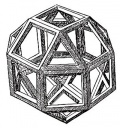Animal tale
From The Art and Popular Culture Encyclopedia
|
Related e |
|
Featured: |
The beast fable, usually a short story or poem in which animals talk, is a traditional form of allegorical writing. It is a type of fable, in which human behaviour and weaknesses are subject to scrutiny, by reflection into the animal kingdom.
Important traditions in beast fables are represented by the Panchatantra and Kalila and Dimna (Sanskrit and Arabic originals), Aesop (Greek original), One Thousand and One Nights (Arabian Nights) and separate trickster traditions (West African and Native American). The medieval French Roman de Reynart is called a beast-epic, with the recurring figure Reynard the fox, of whom story is built upon story.
Beast fables are typically transmitted freely between languages, and often assume pedagogic roles: for example Latin versions of Aesop were standard as elementary textbook material in the European Middle Ages, and the Uncle Remus stories brought trickster tales into English.

